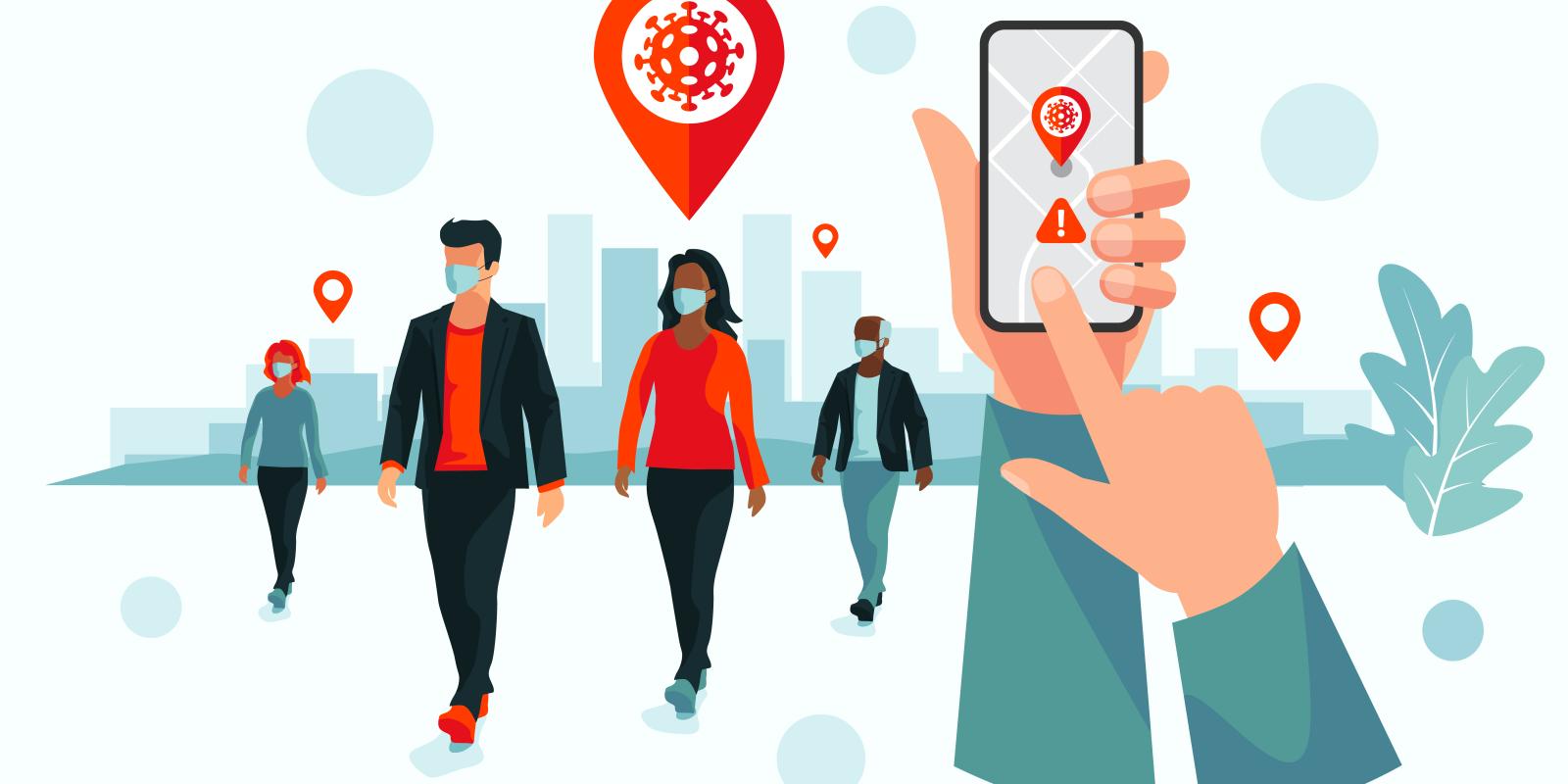
New Contact Tracing Technology Based on WiFi to Help Curb Spread of COVID-19 on Campus
For the past several months, AUC’s Office of Medical Services has been contact tracing suspected and confirmed cases of COVID-19 to help curb the spread of the virus. To improve the efficiency of contact tracing, the office started deploying automated-contact tracing through the use of theAUC WiFi system earlier this month.
According to Vice President of Management and Operations Shereen Shaker '91, contact tracing is a challenging process where infected people have to use their recollection of who they may have come in contact with over multiple days. However, this process can be error-prone due to gaps in memory and panic at time of diagnosis. Therefore, the WiFi tracing solution aims at supplementing manual contact tracing conducted by the AUC clinic to help members of our community recall who they may have come in contact with.
This system is the first Big Data solution at AUC that can locate general proximity of an individual to a suspected or confirmed COVID-19 case. According to Shaker, it is in-line with the recommendations made by the World Health Organization to optimize the traditional contact tracing approaches.
“This solution leverages the existing AUC WiFi infrastructure and the system logs generated by the WiFi Access Points without incurring any significant costs,” said Heba Atteya, Senior Director of Business Intelligence and Data Analytics . “The solution is the first of its kind at AUC, it analyzes the massive WiFi data streams using Google Big Data technology and data mining practices to efficiently store, process and report on contacts.” said Mohamed El Touhamy, Business Intelligence Extract Transform Load developer.
Universities in the United States like Harvard, Purdue and Ohio State have deemed this technology an essential necessity for returning to campus and have already piloted these tracing protocols. Additionally, Apple and Google announced that future versions of the iOS and Android operating systems will include the companies’ COVID-19 notification system.
Shaker said that it has been going well so far at AUC. While there are some challenges related to community members sharing their WiFi credentials with others, disconnecting from the AUC WiFi network and a margin of error in calculating the distance, these issues will be addressed on multiple levels through WiFi setup and awareness campaigns on best practices.
Say someone is notified that he or she could have come in contact with a case — what happens next?
According to Hussam Hassan, the acting chief health and safety officer, once an individual is notified, he or she becomes a suspected case. Suspected cases are contacted by the AUC clinic and told to isolate for seven days as the clinic monitors their symptoms and eventually either confirms or eliminates the possibility of COVID-19.
Looming concerns with technologies like this one are privacy and access to personal data. However, it is important to note that AUC has always had access to this data as part of the WiFi Systems logs. The University has only chosen to leverage this data now to the advantage of everyone in the community by containing the spread of COVID-19.
“Strong data governance practices are followed at AUC to protect confidential data and records. We have extended and even strengthened these standards in this case to ensure that the highest standards of privacy and ethics are adopted” Megahed said.
Additionally, only suspected and confirmed cases of COVID-19 trigger the tracing program, and tracing results are only accessible to the medical team, two members of the Strategy Management and Institutional Effectiveness/Business Intelligence team who worked on developing the solution and the Dean of Students on a need-to-know basis.
“We have also restricted the retention period of WiFi tracing records to 30 days only,” Megahed added. “You should know that you can opt out of this solution by not connecting to the WiFi. However, out of social responsibility, we do not encourage you to do that.”
This new protocol falls within the 3 Ts strategy that the University has been implementing during the pandemic: Tracking, Tracing and Testing. The University’s daily health check provides a tracking system used as a basis for tracing, and with the new WiFi protocols in place, proper tracing can lead to testing of suspected individuals.
